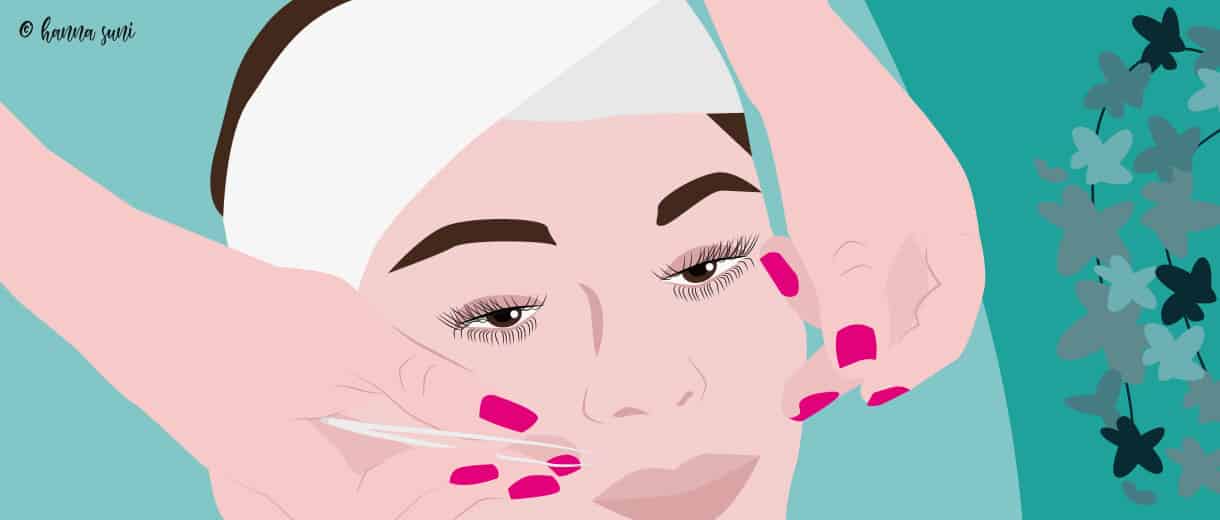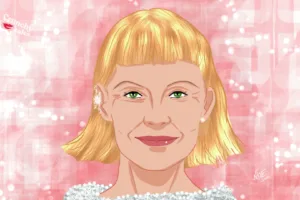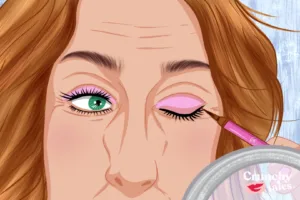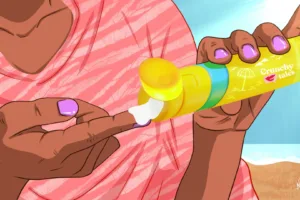How To Remove Your Facial Hair After Menopause
We grow wiser as we grow older, but no one wants to grow hair where it doesn’t belong. Unwanted facial fuzz on your upper lip, inside your nose or around your chin is actually a very common side effect of ageing. After menopause, a woman’s body stops producing the same amount of estrogen but still keeps producing testosterone. And these hormonal changes can lead to extra hair growth.
For a majority of women, it is age-related problem; the hormonal shift begins years before menopause but accelerates during menopause – says Rachel Nazarian of Schweiger Dermatology Group in New York City-. In some cases, there might be also some underlying hormonal abnormalities that can cause hair growth in women independent of age. In this case, these ladies should be evaluated by a doctor.
Whether you’re dealing with dark, coarse growth, or a blanket of blond fuzz, there are are several effective methods to get rid of unwanted menopausal peach fuzz. Laser hair removal is a good one, as are waxing and threading, but there’s no magic potion or silver bullet. Also, don’t forget to take into account that our epidermis becomes more fragile and thinner as we age, so skin reaction might occur quite often.
Classic Methods
If you don’t have a lot of unwanted facial hair, you can probably spend a little bit of time removing it yourself with a pair of tweezers. Depending on the sensitivity of your skin, waxing may also be a good option. The only downside is that this process tends to inflame the delicate skin around your lips. However, in order to prevent little pimples from forming, always apply aloe vera gel around that area. This method may also result in ingrown hairs: you can avoid it by exfoliating the skin before waxing. Exfoliation removes dead skin from the layer of epidermis that traps the hair. However, in case your main problem is dealing with those pesky little nose hairs, rather than plucking them out (which hurts!), give them a little trim instead.
Bleaching and facial hair cream are also good budget options and the most painless forms of hair removal except for some mild tingling or redness as the hair melts away, but it’s always better doing a little test first to make sure your skin doesn’t react (you may experience some irritation). Hair removal creams don’t require professional assistance though the smell can be overbearing and the hair regrowth is quick (within 1-3 days).
Other techniques
Threading
A little painful, but quick, it is a common practice hails from Middle Eastern and Asian countries. It’s performed with a cotton thread, which is doubled, twisted, and rolled over the target area to trap unwanted hair. It works best on smaller areas such as the eyebrows and cheeks but it may be too harsh for the delicate area around your lips. It lasts for 3-6 weeks.
Facial Hair Growth Inhibitors
They are generally made of plant enzymes and are designed to change the makeup of the hair follicle until they eventually stop producing hair. Your doctor can prescribe a topical cream to slow the growth.
Epilation Devices Pluck
With epilation, you get smooth skin that lasts up to 4 weeks. That’s because removing hair from the root means that hair takes longer to grow back than removal with surface methods like shaving and creams. These devices pluck out multiple hairs at once — great for snagging errant hairs between waxes. As long as you follow the proper methods of before and aftercare, this way of removing your hair seems to be the most successful. It’s closest to threading on the pain scale, so more painful than plucking, but not as bad as waxing. Plus, the more you use it, the more accustomed you’ll become to the feeling and you may not even consider it painful after regular use.
Dermaplaning
It is an exfoliating treatment that involves a dermatologist or licensed medical aesthetician gently scraping the surface of your skin with a surgical scalpel to remove dead skin. The results can vary for everyone, but realistically, you can expect to see smoother skin, zero peach fuzz (until it grows back, of course), and slightly brighter-looking skin. And because you’re removing all your dead skin cells, your skincare products will better penetrate your skin when you apply them, making them all the more effective. Not good for very sensitive skin.
Permanent hair removal methods
Nowadays you’ll find a wide range of devices and salon services for light-based hair removal. All methods will leave your skin smooth and hair-free, yet how do you decide between laser and IPL (Intense Pulsed Light) hair removal methods? IPL and Laser processes slowly weaken the follicles and in time the hair becomes thinner and eventually, it stops growing. The key difference between them is the type of light. IPL (Intense Pulsed Light) is a broadband pulsed light source, whereas laser is a monochromatic coherent light source. Both methods target the melanin in the hair follicle and permanent results can be expected from both. Professional laser treatment is working more selective and therefore the very high energy will focus on the hair follicle rather than the surrounding skin. Therefore Professional laser will lead to fast results as well as being suitable to darker skin tones. Energy, frequency and hair colour are all determining factors in the efficacy of the treatment, while the light source, whether it is a laser or an intense pulsed flashlight plays a minor role.
Although devices sold for at-home are quite popular, machines found in professional clinics can reach higher levels of intensity and are more effective. Facial hair has a different cycle of growth and multiple sessions are required to target all the follicles while they’re in a growing phase.





